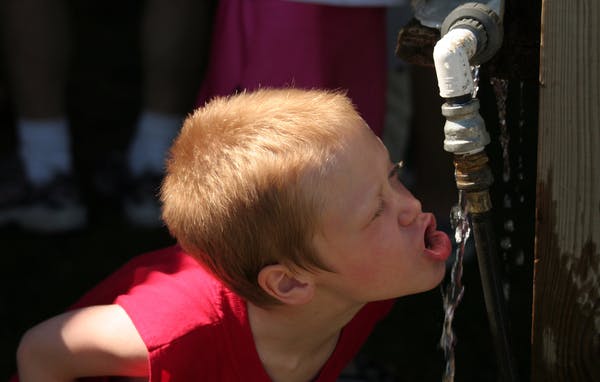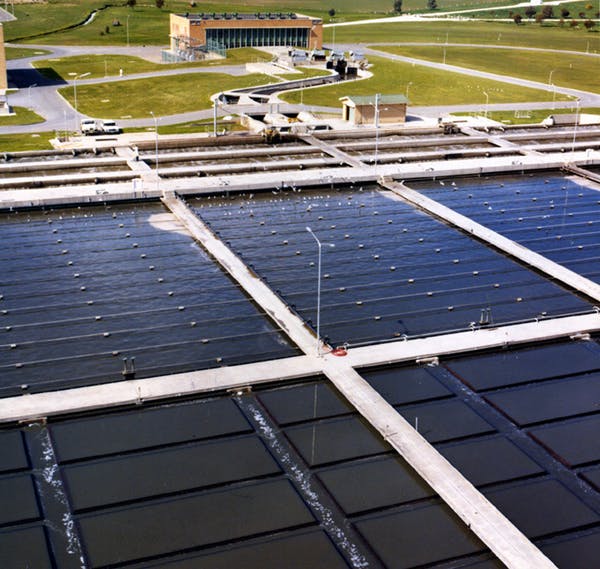Our conventional water supply system that continually captures and delivers water is under great strain because of an increase in population, rapid urbanisation, and drastic changes in climate and rainfall. When the reliance on a continuous supply of water directly to our taps is in jeopardy, we then start to realise that we cannot take the supply of water for granted.

Recycled water is unlikely to have public support until the public fully trusts that it will be clean.
The question that has risen recently is whether Australians are ready to accept drinking recycled water. Before we answer the question, let us look at what is it we are drinking currently.
What are we drinking now?
The majority of Australians are drinking rain water that falls on the land, is collected in dams, transported to reservoirs, is then treated to remove solids and kill pathogens, and is finally distributed to the wider community via networks of pipes (also called reticulated supply). Water fit for drinking is called “potable” water, and the quality of water supplied is governed by Australian Drinking Water Guidelines, that are in line with WHO’s drinking water quality guidelines.
Australia relies on rainfall for most of its water supply. Issues arise when there is a prolonged drought, or, as in Western Australia, when the rainfall seems to steadily decrease – thus reducing the amount of water collected in dams. Solutions such as recycling wastewater for industrial purposes while continuing to use rainwater for potable purpose are useful. In Sydney, during the recent drought season, the then-State Government chose to respond to the “crisis” by building a desalination plant.
Recycled water for non-potable use
Most urban areas in Australia are reticulated, and receive water directly to the point of use. Likewise, most urban areas are sewered, with wastewater from houses, commercial units, restaurants and industry being directly discharged into sewers. Often, a proportion of stormwater also finds its way into sewers. This wastewater, often called sewage (as opposed to “domestic wastewater” which is from households) is transported to sewage treatment plants (STP) where it is treated to different levels of water quality depending on the location of the STP and the point of discharge. The treated wastewater is often referred to as effluent.
Technology to use recycled water for non-potable use such as in industry, and also for domestic outdoors activities, such as gardening is well-established in Australia. Water considered for recycling is sourced from STPs that have a full treatment scheme to remove most pollutants, and the scheme includes disinfection.
Indirect potable reuse
Indirect reuse of recycled water for potable purposes already happens in some parts of Australia. For example, Penrith discharges treated wastewater into the Nepean River, while this water is then used by North Richmond water treatment plant to treat and deliver it to the community in the Hawkesbury region.
In Australia, as most cities and rural towns are sewered, there is an option available to treat wastewater to a quality that is accepted for non-potable reuse. This already happens in Rouse Hill in northwest Sydney where treated water is recycled back to households through a dual-reticulated system.
Sewage can contain substances such as heavy metals, organochlorines (such as pesticides and pharmaceuticals), viruses, and protozoa. The recent 2011 Australian Drinking Water Quality guidelines do take into account the presence of the above substances, as the augmentation of water supply by municipal wastewater (effluent) is recognised as an option, and have set limits on these substances.
Case studies for potable reuse
Technology exists to treat effluent to potable water quality level. There are well-established cases around the world where recycled water is used directly or indirectly for drinking purposes.
Namibia is the only country that has adopted the use of recycled water for direct potable use. Due to lack of sufficient surface and ground water supplies, and low rainfall in the 1960s, the country had to develop a strategy to supply water on a long-term basis. The water reclamation plant at Goreangab started to supply recycled water into the water distribution system in 1967. The plant was upgraded in the 1990s to include extensive physico-chemical treatment and ozonation. The plant has been supplying water for more than 45 years.
Singapore currently imports water from Malaysia, and this agreement ends in 2061. As a way towards having a long term strategy, Singapore built a water-reclamation plant that produces treated water that it calls NEWater. About 15% of Singapore’s water demand is met by NEWater, mostly for commercial and industrial sectors (Khoo, 2009). Less than 1% of drinking water supply is augmented by recycled water.
The other example of indirect potable reuse is at Orange County, California. The main source of water supply used to be groundwater. However, by the late 1950s, increased development and agriculture drained the groundwater level to such an extent that it was below sea level. After evaluating different options, the County decided to use recycled water and for deep-well water to be injected into the coastal barrier. Initially the recycled water, produced by a pilot recycled scheme called Water Factory 21, was blended and injected into multi-point injection wells forming a freshwater mound to stop saltwater intrusion into the groundwater. It was then expanded to increase the groundwater recharge. A new purification plant built in 2007 supplies water for groundwater recharge.
The motivation to recycle water for drinking in all the above cases is a lack of surface or groundwater sources for a long-term, continuous supply.
Namibia spends almost 20% of its production costs on regular monitoring of water quality and keeps a close eye on mortality patterns. Though Singapore’s NEWater is not used extensively for drinking purposes, visitors to the plant are given out NEWater bottles for drinking.
Not much information is available regarding costs; Professor Khoo has reported that the cost of NEWater prices have fallen from $1.30/m3 in 2003 to $1.00/m3 in 2007, due to the decrease in membrane cost, and improvements in operational efficiency. In the case of Namibia, one technical paper notes that the cost of reclaimed water is twice that of the conventional water supply.
Public consultation and acceptance is a crucial factor for success in some of the above cases. Singapore’s success could be attributed to a comprehensive public education programme that included leaders from the community, business, and students. Orange County promotes the importance of groundwater recharge by recycled water to gain continuous support from the community.
Recycled water for potable use in Australia
The Western Corridor Recycled Water Project in Queensland, completed in 2009, supplies recycled water to power stations. There is an option available to add this water to the drinking-water supply if dam levels fall below 40%. On the other hand, Toowoomba in Queensland considered an indirect potable reuse (IPR) scheme where treated effluent is subject to advanced treatment, and then sent to a storage dam or reservoir, where it mixes with natural water. The combined water would then be allowed to follow the normal water treatment process before it is supplied to the community. However this proposal was rejected by the community.
The National Water Commission (NMC) in 2007 published a Waterlines Occasional Paper about using recycled water for drinking. It discusses the option of Indirect Potable Reuse (IPR) in detail. The report does not highlight the cost of using recycled water for indirect potable reuse. However, following the experience by Singapore and Namibia, the unit cost of recycled water can either increase (due to numerous factors, not excluding cost of additional infrastructure and treatment costs) or steadily decrease (due to improved treatment plant efficiency and decreased membrane costs). The final unit cost of water would be an important consideration in adopting potable water reuse.
In Australia, community education and consultation would be vital factors for recycled water to be used for potable use. In addition to that the following points also are to be considered:
- In Sydney, for example, there are several sewage treatment plants with varying capacity. A feasibility study should be carried out to decide which of these plants can be used to source wastewater in terms of its quality and quantity. In Namibia, city planning is carefully considered to avoid certain industries to be built in the catchment area of the reclamation plant.
- Is there enough capacity, or feasibility to increase the capacity in the dams or reservoirs to receive reclaimed water?
- Is there enough capacity in the water treatment plant to accommodate reclaimed water?
- How do we ensure certain water quality parameters, such as viruses (that would be present in wastewater) are measured, as limited analytical methods are available?
Strict operational control and rigorous monitoring of treatment processes is necessary to avoid major health risks. - Should we rather develop strategies to separate treatment process to suit the quality of water use? For example, currently, all water is treated to drinking water quality standards including the water we use to flush the toilet. Instead, should we develop a system where secure and separate drinking water treatment is developed, so water for other purposes can be sourced from recycled water? This option may be considered favourably by the community.
Source: https://theconversation.com/
Dear User/Visitor! Please, answer on our questions: tick off one of the positions – your answer will make us able to improve our site and make it more interesting and useful!


